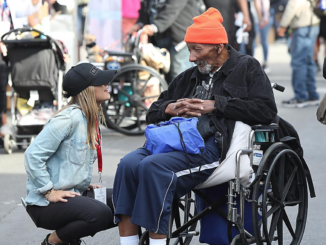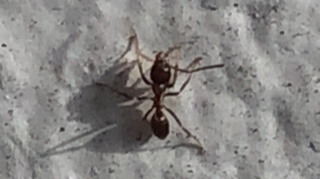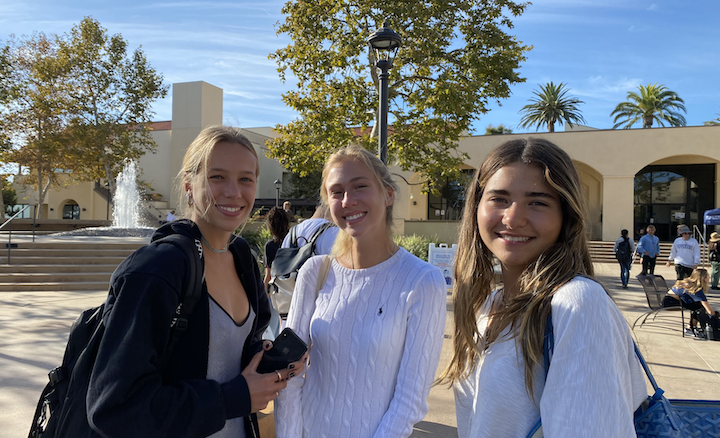
The transition of moving and assimilating to university life has always been difficult.
Social media and meeting virtually eased this transition for many students after the COVID-19 pandemic.
First-year students used social media to meet peers and second-year students relied on virtual meetings through Zoom to get to know professors and classmates before studying in person.
“Sometimes having an orientation or a peak behind the scenes or a sense of what to expect can make the real experience less intimidating,” said Kelly Haer, executive director for the Boone Center for the Family and the director of the Relationship IQ Program.
The first-year and sophomore students said meeting virtually, either through social media or Zoom, helped them assimilate to Pepperdine. Pepperdine’s social media team worked hard to ease this transition for students.
Social media helps students make friends before coming to Pepperdine
Each student used social media differently in order to assimilate into the new community.
“Moving into college, moving in on campus, can be an experience that’s experienced all types of ways, depending on where a person is coming from, their family situation, how far they’ve moved, other life experiences,” Haer said. “College can be a significant adjustment.”
Incoming first-year student Michael Sugimoto made an Instagram account, @pepperdine2025, for incoming students to meet friends and get more comfortable with the Pepperdine environment. A student usually posted a picture of themselves and a small caption explaining who they are and their hobbies. Many first-year students used this to find a roommate. Students have created accounts like this for many years.“All the information I got was from email and the Pepperdine2025 Instagram page,” Ana Villarreal, first-year public relations major, said. “If I wouldn’t have that, I don’t know what I would’ve done.”
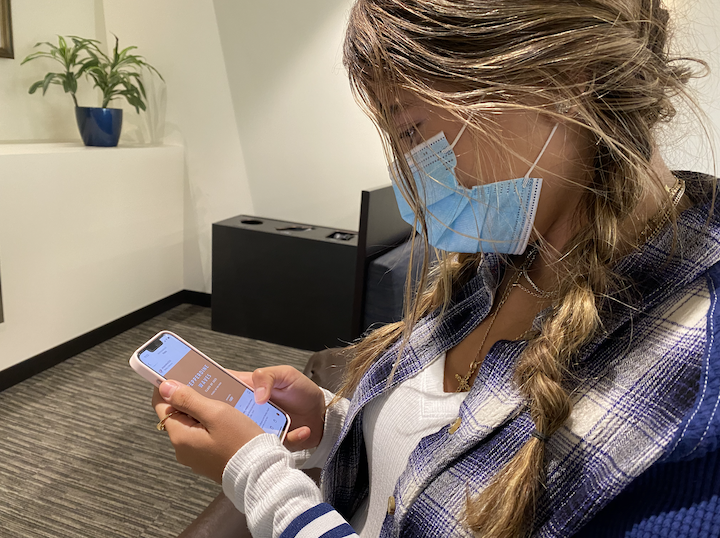
Jamal found this Instagram page helpful to get a sense of what Pepperdine would be like and what kind of people she would be surrounded by. First-year advertising major Owen Mirka agreed.
“Yes, social media did help me, since I had the opportunity of meeting people beforehand, actually getting on campus and making connections through Instagram and Snapchat,” Mirka said. “It was a positive experience in my opinion.”
A Pepp Post poll of 62 students found that over 93% of first-year students used social media to meet classmates before they came. For most students, 84%, it helped ease their transition.
The Pepp Post poll showed that Instagram was the most popular social media platform used before moving in, followed by Snapchat and YouTube.
Students used Instagram and Snapchat to meet incoming first-year students, to find friends and roommates. Students used YouTube to watch videos about the city, campus, housing and more.
Villarreal said she watched videos like, “A Day in the Life of a Pepperdine Student” on YouTube, to see what her life would be like when going here. She relied on social media because did not have the opportunity to see the campus prior to moving in.
“There are some things you only get to know by living here,” Jamal said. “And I feel like social media helped me assimilate in a way that I could see what people here are like, what they talk about, how they acted, which is different because of cultural differences.”
Mesfin Awoke Bekalu, in the Lee Kum Sheung Center for Health and Happiness at Harvard T.H. Chan School of Public Health, studies social media’s effect on mental health.
“Social media may provide individuals with a platform that overcomes barriers of distance and time, allowing them to connect and reconnect with others and thereby expand and strengthen their in-person networks and interactions,” Bekalu told Harvard News.
Social media is a great starting point with connecting to people, Haer said. However, if it is the only way a person forms connections, people can miss out on many crucial parts of forming a bond. One of them being seeing a person’s body language in real time.
Virtually meeting classmates and professors eased the transition to in-person classes
Sophomores struggled with virtual learning in their first year of university, but getting to meet people remotely helped with starting in-person classes this fall.
The Pepp Post poll only included seven sophomore voices, but of these, four said meeting classmates and professors on Zoom was helpful when adjusting to their new community.
“Zoom is an uncomfortable situation for everyone, so having this challenge helped me prepare for a bigger one,” Loli Moura, sophomore business administration major, said.
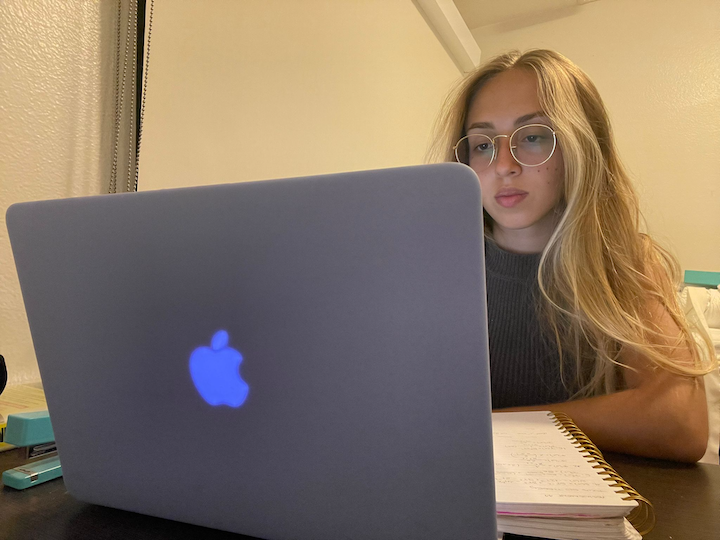
Sabrina Musharbash, sophomore biology and sociology major, said she felt more comfortable, especially in the beginning of this school year, because she would see familiar faces around campus, which let her start up conversations with, “Hey, we had a class on Zoom together.”
Musharbash said this was a nice way to develop deep connections before actually meeting them in person.
Something that helped sophomore biology major Lidia Qaladh was getting involved with SGA and other extracurricular activities. Last year, the first-year senate planned additional events for students to get more involved and enjoy their first-year experience more.
“As much as I wish I had a typical first year, I am also content with how my first year went,” Qaladh said.
Meeting people virtually can go a number of ways. In the end, it depends on the person on how they want to approach this obstacle.
Haer wasn’t surprised that some students didn’t find connections through Zoom classes.
Students in an online environment don’t have that natural time to talk to classmates before or after class. Haer said. It is harder to engage and discuss with a classmate when students are gone in a second, just pressing the “leave meeting” button when the professor dismisses class. The lack of socializing is the primary difficulty of virtual learning.
The Pepperdine social media team caters posts to students
Pepperdine’s integrated marketing communication team worked on posts to help students transition.
“Especially after the last year, I felt it was really important for us to bring together the community as much as possible,” said Laura Nickerson, Pepperdine’s social media manager. “Which was a real challenge for over the course of the year.”
The team uses a different communication strategy for each platform. Instagram is their most used platform. Making interactive stories on Instagram is a great way for students to communicate with each other, Nickerson said.
More specifically, they curate Instagram stories like Q&As, playlists of students’ favorite songs, showing where students are from by using one emoji, describing a student’s major in one word and a this or that poll. An example of this would be, would a student rather study in the Payson library or in their dorm.
“Those kinds of things are really nice because we can take those answers and share those out and give people the opportunity to have an experience with each other,” Nickerson said.
The team asks themselves a series of questions, especially during those crucial times when students were in distance learning or finally moving in, Nickerson said. For example, “How could we make it better on our social media channels?” “How could we reach students who may not be on campus while some are in the area?” “How can we include everyone?”
Once the team pinpoints this, they can create posts across all platforms that are focused on these first-year and sophomore students who are going through a difficult transition.
Haer said she believes that meeting via social media and Zoom made students enjoy being together that much more.
“People aren’t taking being in each other’s presence for granted,” Haer said. “So, there seems to be a much greater appreciation from the get go of being together and that appreciation can prompt people to reach out and connect more and be more engaging with each other.”
Anezka Liskova completed the reporting for this story in Jour 241 in Fall 2021 under the supervision of Dr. Christina Littlefield and Dr. Theresa de los Santos. Dr. Littlefield supervised the web version of the story.


